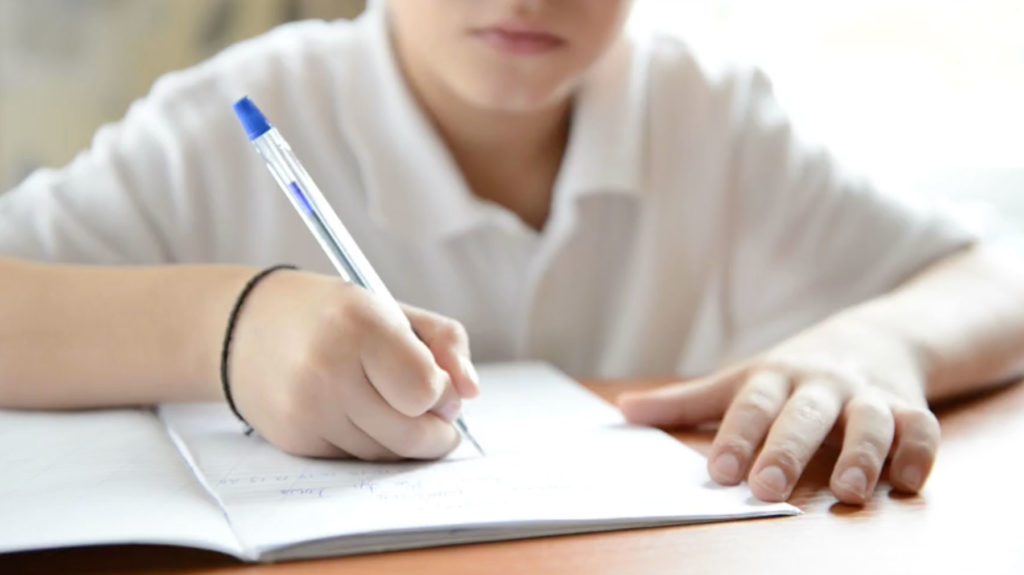Author: Simon R Horbury
One of the simplest means by which technology may help enhance learning is in notetaking. Many children with special educational needs receive recommendations from educational psychologists that they should use laptops routinely in the classroom; university students use laptops to record notes in lectures and tutorials. The Covid-19 pandemic has seen schoolchildren having to use keyboards as a necessity to make notes and produce work. However, very little research has been carried out to investigate whether the mode of note-taking has any effect on learning. Work by Mueller and Oppenheimer (2014, 2018) and by Morehead et al. (2019) has raised the possibility that, in mainstream education, students should be encouraged to record notes and information using handwriting rather than by keyboard. Until this year, no studies of the effect of note-taking mode had been carried out on schoolchildren, despite the increasing use of technology within classrooms.
Research by myself and Caroline Edmonds at the University of East London looked at the learning of 10- and 11-year-old boys when they took notes in history and biology lessons. Previous studies have examined the influence of note-taking mode on understanding in university students but, to the knowledge of the authors, this is the first time that a study comparing the effects of type of note-taking equipment on the performance of schoolchildren has been carried out.

We assessed their performance in the children’s usual classroom, with their usual class teacher and teaching materials, thus reproducing the normal day-to-day school environment. The boys either took notes by hand or recorded them using a keyboard. They were tested on the lessons immediately after and then a week later. Tests were designed to be answered using a multiple-choice format, and the questions assessed either factual knowledge or conceptual understanding. The boys who wrote by hand in the history test then took notes by keyboard in the biology lesson, and vice versa.
We found that factual understanding was not affected by the mode of note-taking either immediately after the lesson, or one week later. However, one week later there was an effect on conceptual understanding: pupils who had handwritten their notes performed significantly better in both the history lesson and the biology lesson. These results are like those noted by Mueller and Oppenheimer in their work on university students (2014, 2018).
The causes of differences in learning need further study. There are at least three possibilities:
- The boys in the study had a basic awareness of the QWERTY keyboard, having received training in previous years, but they would not be considered to be touch-typists. This would result in a reduced automaticity when typing that would be expected to reduce the amount of note-taking that was made. However, in this study it was found that the number of words written by either group was similar. Since both groups did equally well on factual recall, this suggests that the lack of automaticity was not an issue.
- The lack of automaticity could also reduce the amount of cognitive capacity available for encoding of information.
- It has been suggested that typing encourages verbatim recording and less active processing (Luo et al., 2018). This, in turn, reduces the amount of information encoding that may take place during a lesson (Kiewra, 1985). Luo et al. also found that adults who recorded notes by hand recorded more visual notes (such as arrows and images) than those using a keyboard, while laptop users recorded a greater quantity of notes.
Further studies should investigate the quality of the notes recorded using different modes and whether pupils with special educational needs and disabilities are affected in a similar fashion. Pupils could also be given explicit training in use of note-taking methods using laptops.
There are educational implications that follow from this study for classroom use of technology such as laptops for note-taking. Educational technology must be employed in a manner that supports students’ learning (Luckin et al., 2012). Part of preparing children for the workplace, and/or the demands of further study, is to offer students touch-typing training and clear advice on the best way to produce notes. Since these areas are not always explicitly included in official guidelines, such as the National Curriculum in the U.K. (Department for Education, 2013), educators will need to consider their individual policies about introducing touch-typing and reducing handwriting.
Author contact details: Broomwood Hall Upper School, Nightingale Lane, Clapham SW12 8NR
Email: S.horbury@northwoodschools.com
References
Department for Education (2013). The national curriculum in England.
Horbury, S. R. & Edmonds, C. J. (2020). Taking class notes by hand compared to typing: Effects on children’s recall and understanding. Journal of Research in Childhood Education. DOI: 10.1080/02568543.2020.1781307
Kiewra, K (1985). Investigating notetaking and review: A depth of processing alternative. Education Psychologist, 20 (1), 23–32.
Luckin, R., Bligh, B., Manches, A., Ainsworth, S., Crook, C., & Noss, R. (2012). Decoding learning: The proof, promise and potential of digital education. NESTA.
Luo, L., Kiewra, K., Flanigan, A. E., & Peteranetz, M. S. (2018). Laptop versus longhand notetaking: Effects on lecture notes and achievement. Instructional Science, 46(6), 947–971.
Morehead, K., Dunlosky, J., & Rawson, K. A. (2019). How much mightier is the pen than the keyboard for note-taking? A replication and extension of Mueller and Oppenheimer (2014). Educational Psychology Review, 31(3), 753–780.
Mueller, P. A., & Oppenheimer, D. M. (2014). The pen is mightier than the keyboard: Advantages of longhand over laptop note taking. Psychological Science, 25(6), 1159–1168.
Mueller, P. A., & Oppenheimer, D. M. (2018). Corrigendum to: The pen is mightier than the keyboard: Advantages of longhand over laptop note taking (Psychological Science (2014), 25(6), 1159–1168).








